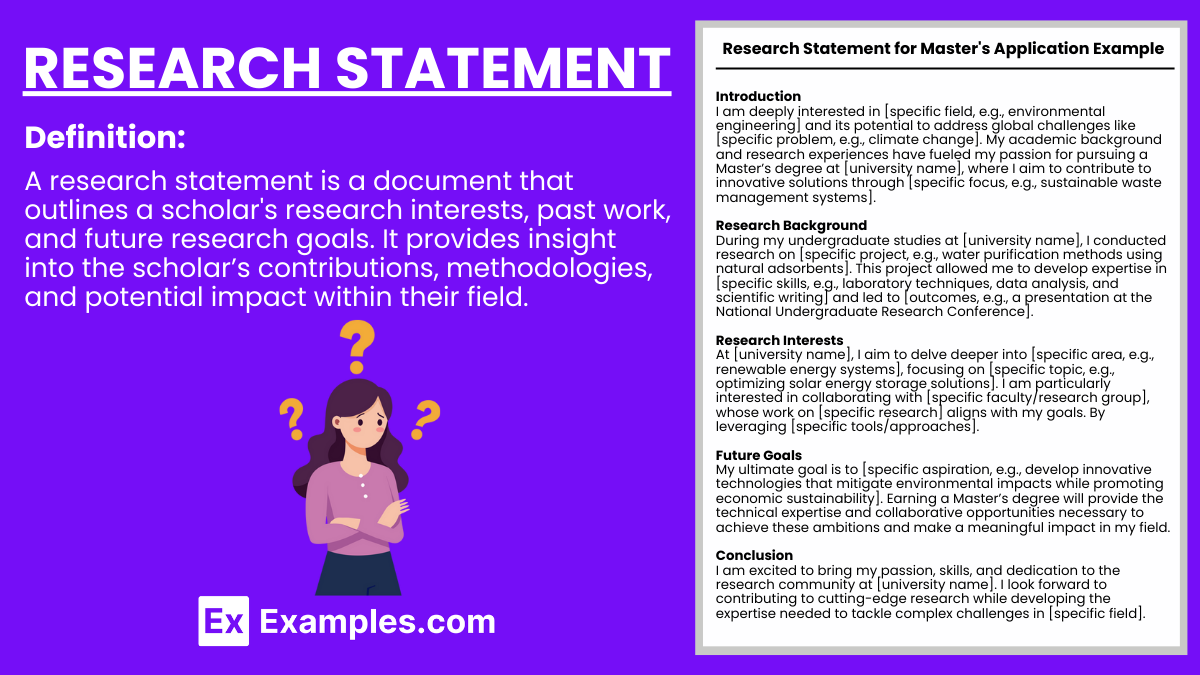10+ Research Statement Examples to Download
A research statement is a concise summary of a scholar’s research goals, achievements, and future directions. It plays a critical role in academic settings, particularly in thesis papers, research proposals, and outlining an effective research design. This statement highlights the scholar’s focus and vision, guiding their contributions to the field.
What is Research Statement?
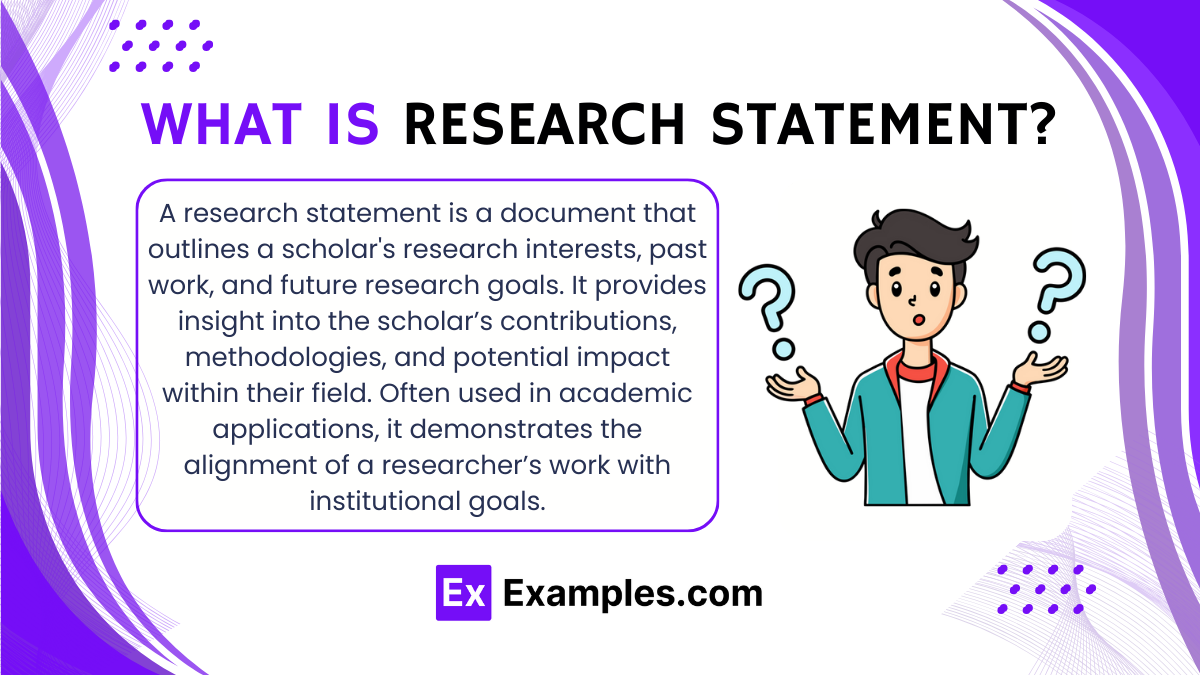
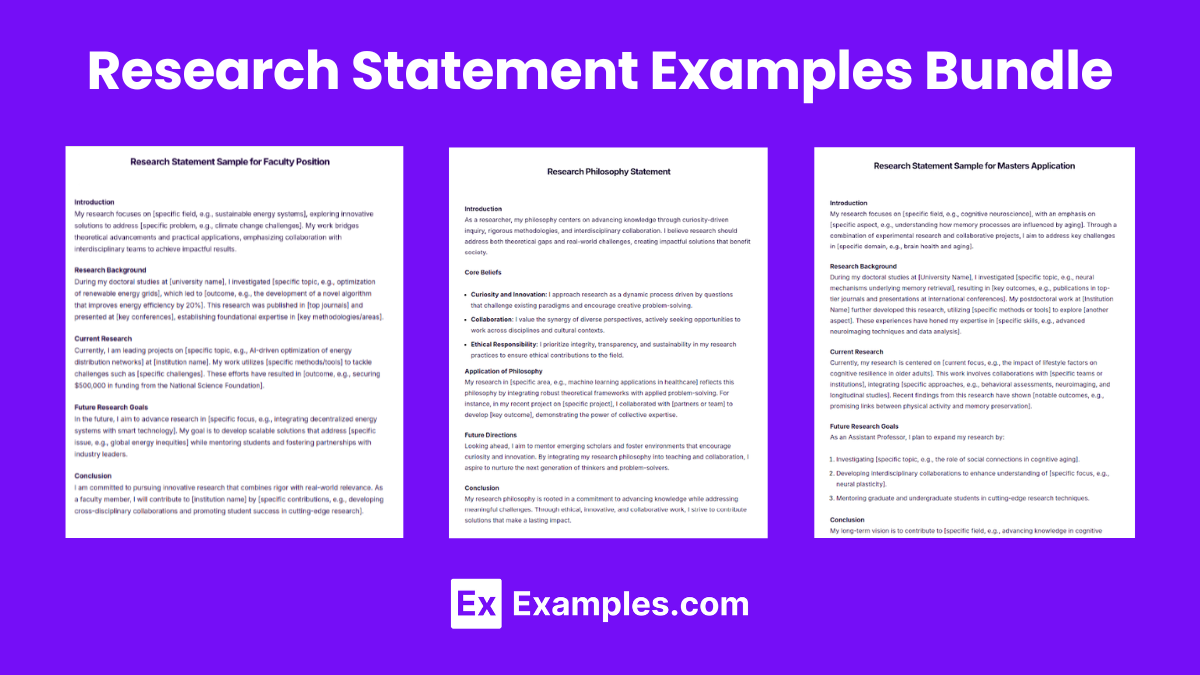
Download Research Statement Example Bundle
Research Statements Format
Introduction
- Briefly introduce your research area and its significance.
- State your primary research interests or goals.
Research Background
- Summarize your past research work, including key findings and contributions.
- Highlight how this work has shaped your expertise.
Current Research
- Discuss ongoing projects and their objectives.
- Include methodologies, tools, and approaches used.
Future Research Goals
- _Outline your future research plans and their potential impact.
- Align these goals with current trends or institutional priorities.
Conclusion
- Provide a concise summary of your vision as a researcher.
- Emphasize your commitment to advancing knowledge in your field.
Formatting Tips:
- Use clear headings and subheadings for easy navigation.
- Keep the document 1-2 pages long, unless specified otherwise.
- Tailor the statement to the specific institution or position you’re applying for.
Biology Research Statement Example
Introduction
My research focuses on exploring [specific area, e.g., microbial interactions and their impact on ecosystem dynamics], aiming to address global challenges such as [specific challenge, e.g., climate change and biodiversity loss]. By integrating experimental biology and computational modeling, I strive to uncover the underlying mechanisms that drive ecological balance and adaptation.Research Background
As an undergraduate at [University Name], I investigated [specific project, e.g., the role of soil microbiota in nutrient cycling]. This research provided me with foundational skills in [specific techniques, e.g., metagenomic sequencing and statistical analysis]. My work led to [specific outcome, e.g., recognition at a university-wide research symposium for identifying key microbial species influencing crop yield].For my Master’s research at [University Name], I focused on [specific topic, e.g., the genetic basis of antibiotic resistance in aquatic bacteria]. Using [specific methodologies, e.g., qPCR and plasmid profiling], I identified [specific result, e.g., the emergence of novel resistance genes linked to environmental pollutants]. This work resulted in [key achievements, e.g., a publication in Environmental Microbiology and invitations to present at international conferences].
Current Research
Currently, my research at [Institution Name] examines [current topic, e.g., the interplay between microbial communities and host immunity in marine organisms]. By employing [specific tools, e.g., single-cell RNA sequencing and bioinformatics pipelines], I aim to uncover [specific findings, e.g., the functional roles of specific microbes in promoting resilience to environmental stressors]. Preliminary data from this project has shown [notable results, e.g., promising insights into the role of microbiomes in coral bleaching resistance].Future Research Goals
Looking ahead, I aim to expand my work into [specific area, e.g., the development of bioengineered microbial solutions to mitigate environmental degradation]. My future goals include:
- Investigating [specific topic, e.g., microbial adaptation to extreme environments].
- Collaborating with ecologists and computational biologists to create predictive models of ecosystem responses to global change.
- Mentoring aspiring researchers to foster creativity and innovation in biological research.
Conclusion
I am dedicated to advancing our understanding of biological systems by addressing fundamental and applied questions. Joining [Institution Name] will provide the opportunity to collaborate with leading scientists, conduct transformative research, and inspire the next generation of biologists to contribute to solving pressing global challenges.
Research Statement Sample for Faculty Position
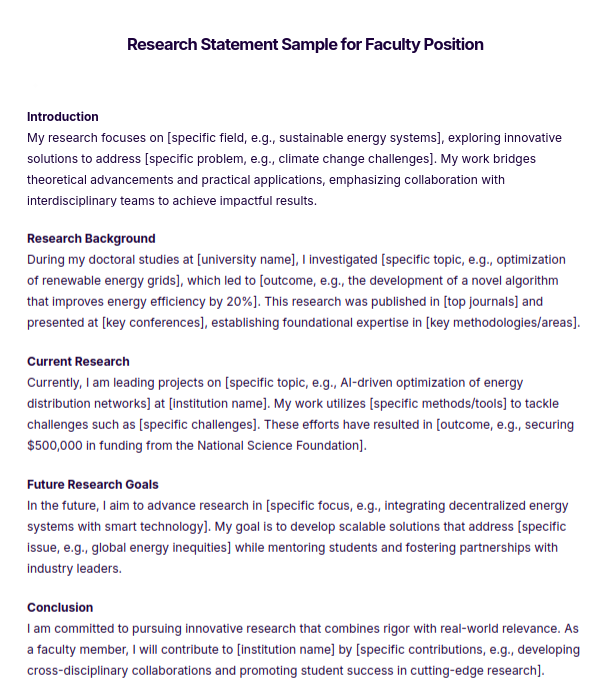
Research Philosophy Statement

Research Statement Sample for Masters Application
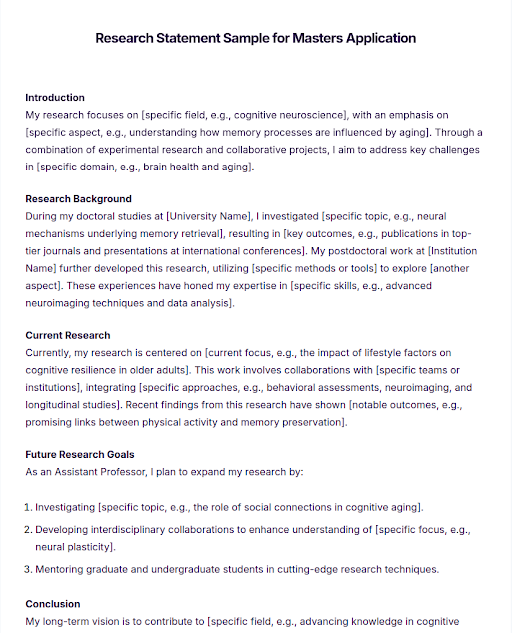
More Research Statement Examples and Samples
- Nursing Research Statement Example
- Research statement of the problem generator
- Graduate School Research Statement
- Thesis Statement in Research
- Biology Research Statement
Business School Research Statement
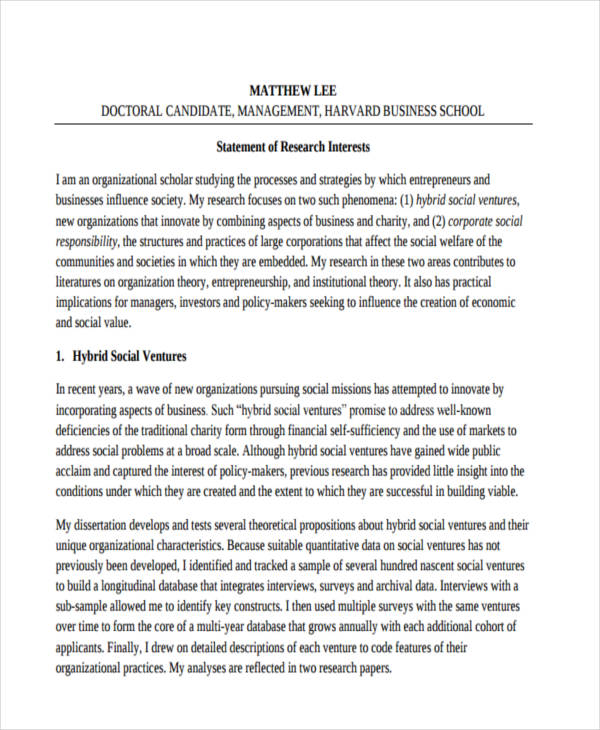
Free Medical Research Statement

Research Methodology Statement in PDF
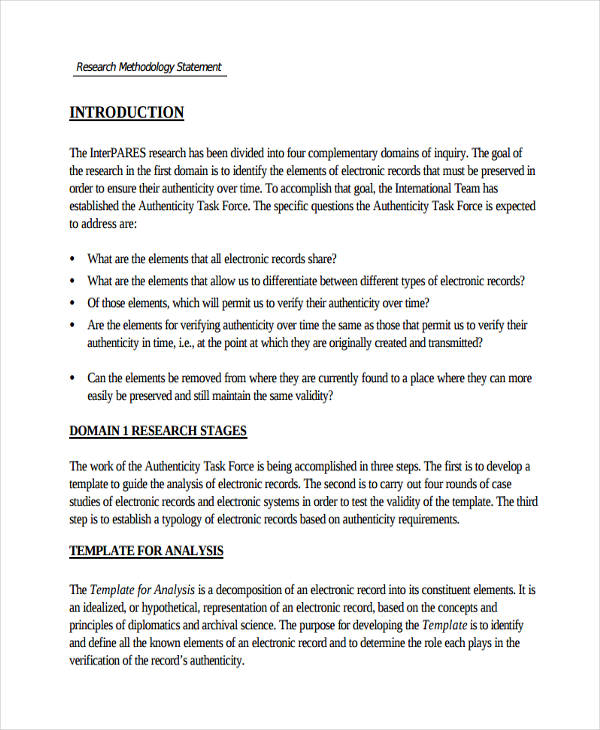
Preliminary Research Statement
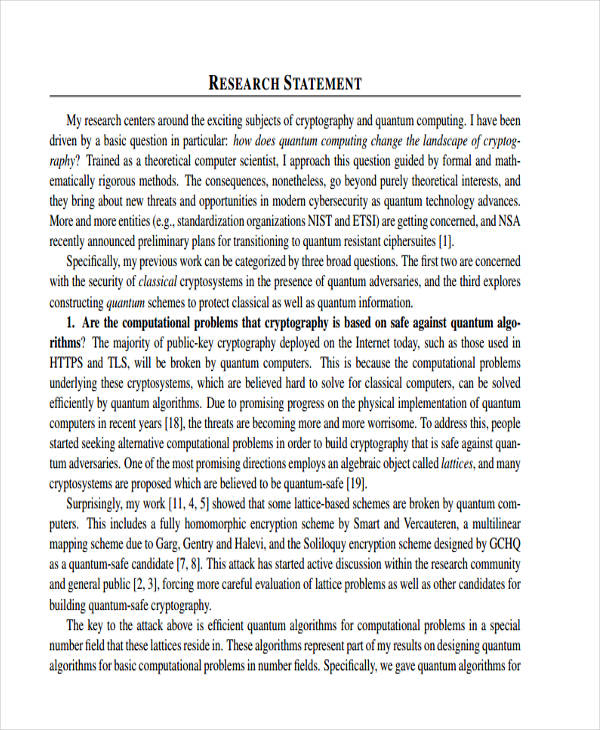
Personal Research Statement Example

Business Research Statement Example
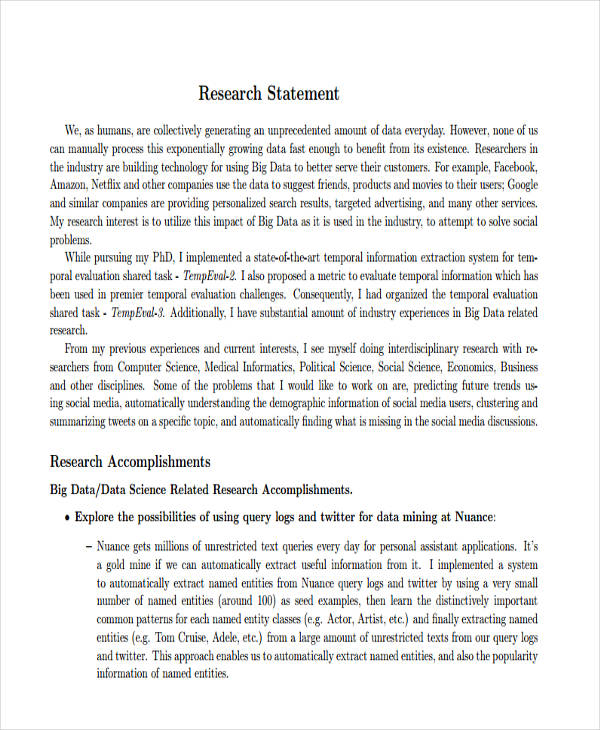
Research Statement Example
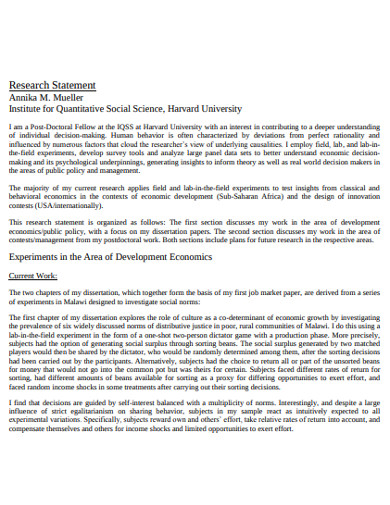
Research Job Application Statement
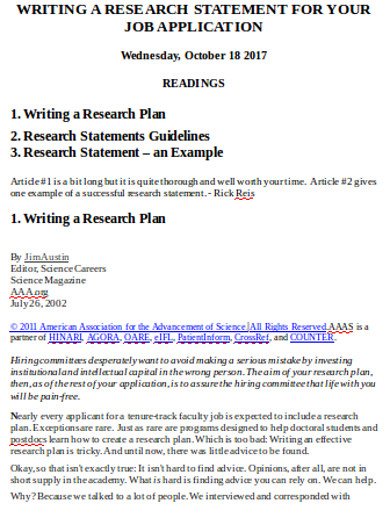
Research Problem Statement Template
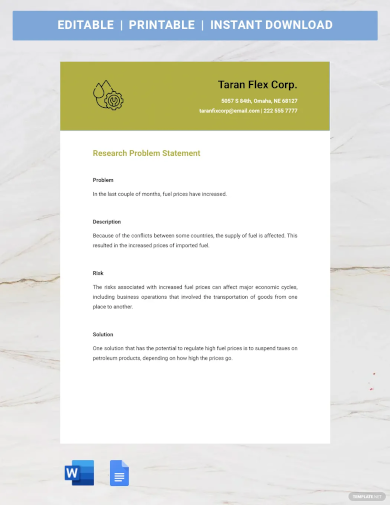
Organization of Research Statements
A research statement serves as a concise summary of a researcher’s current research, future research goals, and the impact of their work within their field. Primarily used in academic job applications, grant proposals, and tenure reviews, a research statement highlights the researcher’s expertise, areas of interest, and overall contributions to their field. It provides hiring committees, funding agencies, or review panels with a clear understanding of the researcher’s scholarly trajectory, demonstrating both their accomplishments and potential for future contributions.
A well-crafted research statement outlines key research questions, methodologies, and significant findings, while also showcasing how the researcher’s work addresses broader scientific, societal, or technological issues. It reflects the researcher’s passion, curiosity, and vision, indicating how their work aligns with and contributes to the goals of the institution or funding organization. Additionally, it demonstrates the applicant’s ability to articulate complex ideas effectively and to frame their research within the context of broader academic or industry trends.
The Purpose of a Research Statement
A research statement serves as a concise summary of a researcher’s current research, future research goals, and the impact of their work within their field. Primarily used in academic job applications, grant proposals, and tenure reviews, a research statement highlights the researcher’s expertise, areas of interest, and overall contributions to their field. It provides hiring committees, funding agencies, or review panels with a clear understanding of the researcher’s scholarly trajectory, demonstrating both their accomplishments and potential for future contributions.
How to write Research Statement
Writing a compelling research statement involves showcasing your research interests, past accomplishments, and future plans in a structured and concise manner. Follow these steps to craft an effective research statement:
1. Understand the Purpose
- A research statement highlights your academic and professional achievements while demonstrating how your work aligns with the goals of the institution or program.
- Tailor it to the specific audience, whether for academic positions, graduate applications, or grant proposals.
2. Structure Your Statement
Use a clear and logical format with the following sections:
a) Introduction
- Briefly introduce your research area and its significance.
- State your primary research interests and goals.
b) Past Research
- Summarize key achievements and experiences, including methodologies, tools, and outcomes.
- Highlight how your work contributed to the field or solved specific problems.
- Provide concrete examples and cite major publications or presentations.
c) Current Research
- Discuss ongoing projects, explaining their objectives and significance.
- Mention collaborations, funding, or unique approaches you are using.
d) Future Research Goals
- Outline your future research directions and how they align with current trends or institutional priorities.
- Specify potential projects, their impact, and how they address pressing challenges in your field.
e) Conclusion
- Summarize your vision as a researcher and emphasize your commitment to advancing knowledge.
- Reiterate how your research aligns with the institution’s mission or program’s goals.
3. Use Clear and Concise Language
- Avoid jargon or overly technical terms unless necessary.
- Write in an active voice and keep sentences concise and engaging.
4. Showcase Your Unique Contribution
- Focus on what makes your research distinct and innovative.
- Highlight interdisciplinary approaches or new methods you’ve developed.
5. Align with the Institution or Program
- Research the institution’s mission, faculty, and ongoing projects.
- Tailor your statement to reflect how your work complements their goals.
6. Keep It Concise
- Stick to 1-2 pages unless specified otherwise.
- Avoid repetition and focus on the most impactful points.
7. Proofread and Revise
- Review for clarity, grammar, and consistency.
- Seek feedback from mentors, colleagues, or peers to refine your statement.
FAQs
Why is a research statement important?
A research statement is crucial because it demonstrates your ability to conduct meaningful research, outlines your expertise, and shows how your work aligns with the institution or program’s goals.
Who needs to write a research statement?
Research statements are commonly required for academic job applications, graduate school applications (Master’s or PhD), postdoctoral positions, and research grant proposals.
How long should a research statement be?
Typically, a research statement is 1-2 pages long. It should be concise yet comprehensive, effectively summarizing your past, present, and future research in a clear and engaging manner.
How is a research statement different for academic and industry positions?
For academic positions, the focus is on long-term research goals, scholarly contributions, and alignment with the institution’s mission. For industry positions, the emphasis is on practical applications, innovation, and alignment with the company’s objectives.
Can I include collaborative projects in my research statement?
Yes, including collaborative projects is encouraged. Highlight your role, the outcomes of the collaboration, and how it contributed to your field. It shows your ability to work in team settings and contribute effectively.


